Don Nunley was the property master on Steve McQueen’s famous Le Mans film and knew the actor.
He and I were having dinner one evening, and he told me about a watch he’d recently sold. He said it was used in a McQueen film.
“That wouldn’t be the Heuer Monaco, would it?” I asked.
“As a matter of fact, it was,” Don said.
Back in the 1970s, McQueen was the king of cool: he was a world-famous movie star and a prominent racecar driver. In 1970 he placed second in the 12 Hours of Sebring – a professional race – driving a Porsche 908/02.
His star status rubbed off on whatever he touched. Case in point: the Heuer Monaco used in his hit movie, which has become an iconic watch synonymous with both McQueen and motor sports.
There are so many shots in Le Mans of the Monaco poking out from under the right sleeve of McQueen’s white Nomex racing suit with the “Chronograph Heuer” patch on the right shoulder.
Talk about product placement: Nunley was one of the first to tap this now hugely lucrative revenue source for filmmakers.
Nunley’s product placement idea for combining the world’s most grueling and famous car race with the equally legendary Heuer brand was a stroke of genius.
Timing is essential to motorsports, and Heuer was known for its precision and association to the sport even then: the sport’s leading participants actually used the brand’s timepieces.
Additionally, motor sports also attract a well-heeled crowd.
These were the perfect ingredients for a match that ultimately got the checkered flag. Nunley and Heuer succeeded in linking one of the most recognized high-end watch brands of the era with the megastar of the time.
My friend now admits that he should have bought all the Heuer stock he could haven gotten his hands on.
Le Mans prop selection
“You’ve got to understand,” Nunley told me, “being the property master on a major film with the biggest star in the industry requires the diplomacy of an ambassador combined with the insight only a crystal ball can provide. The biggest mistake a prop master can make is not giving the star enough choices in the props he uses throughout the film.
“When we began the Le Mans project in 1970, Steve McQueen was at his absolute height as a movie star. He was just coming off two hits – Bullitt and The Thomas Crown Affair. That box office power gave McQueen the luxury of choosing his own projects and setting his own terms.”
Nunley described how he assembled the props within the context of both the film and the character McQueen played: Michael Delaney, a flawed but respected driver with more on his mind than just racing.
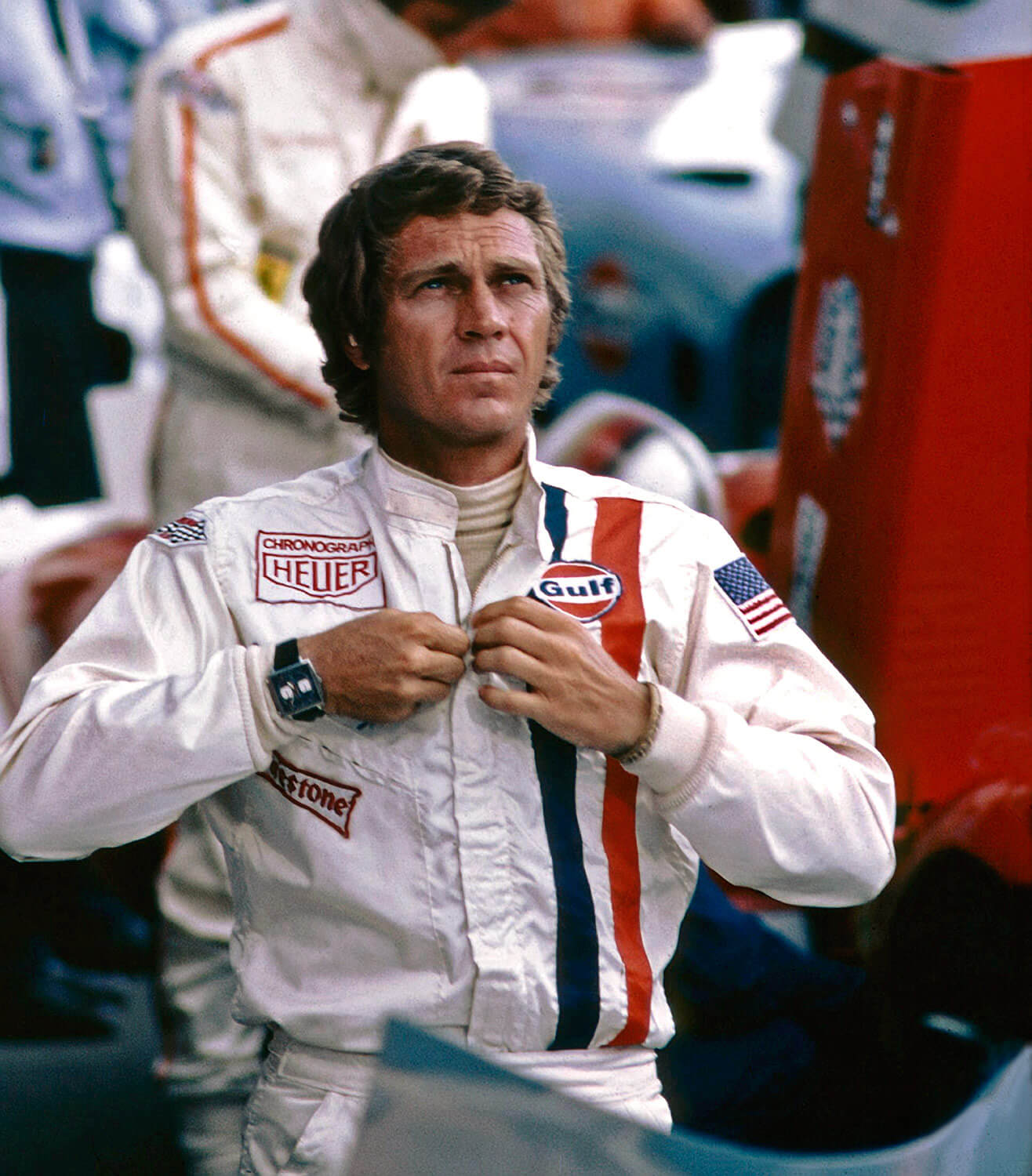
Steve McQueen wearing a Heuer Monaco on the set of the film ‘Le Mans’ (photo courtesy TAG Heuer)
“During the time I worked with Steve,” Nunley continued, “I became a pretty good judge of what props would make him look good and be natural for him to handle on set. It was up to me to select a group of possible choices for each item. But it was up to Steve to sell the audience on his final selections.”
In McQueen’s case, the props and wardrobe items he used in his films often made their way into his personal collection. Indeed, in 2011 RM Sotheby’s auctioned the actor’s personal Porsche 911S – which was used in Le Mans – for a hammer price of $1.25 million (with buyer’s fee: $1,375,000).
At the same auction, one of three racing suits (with helmet) McQueen wore in the film hammered for $984,000.
The market for film-used Nomex racing suits seems to have softened in the ensuing years. In 2017 another of the McQueen/Le Mans racing suits hammered for just $336,000. However, this one has a story behind it.
After its release, German teenie magazine Bravo sponsored a promotional contest for two of the film’s memorabilia: the Porsche 914 as first prize and one of the remaining white Nomex racing suits (with helmet) as second prize. I can only assume McQueen’s production company donated the two items.
One of the contest entrants was a teenager at the time, hoping to win the Porsche. He got the second prize instead, the racing suit. Disappointed, he folded it up and placed it in storage for the next 46 years.
The widow of the suit’s owner then contacted Sotheby’s in 2017, where it was included at auction.
How the Heuer Monaco was chosen
Nunley told me that he contacted Jack Heuer to see if he might have an interest in providing some pieces for the film. His shopping list included stopwatches, timing boards, logo patches (for wardrobe), and several chronographs.
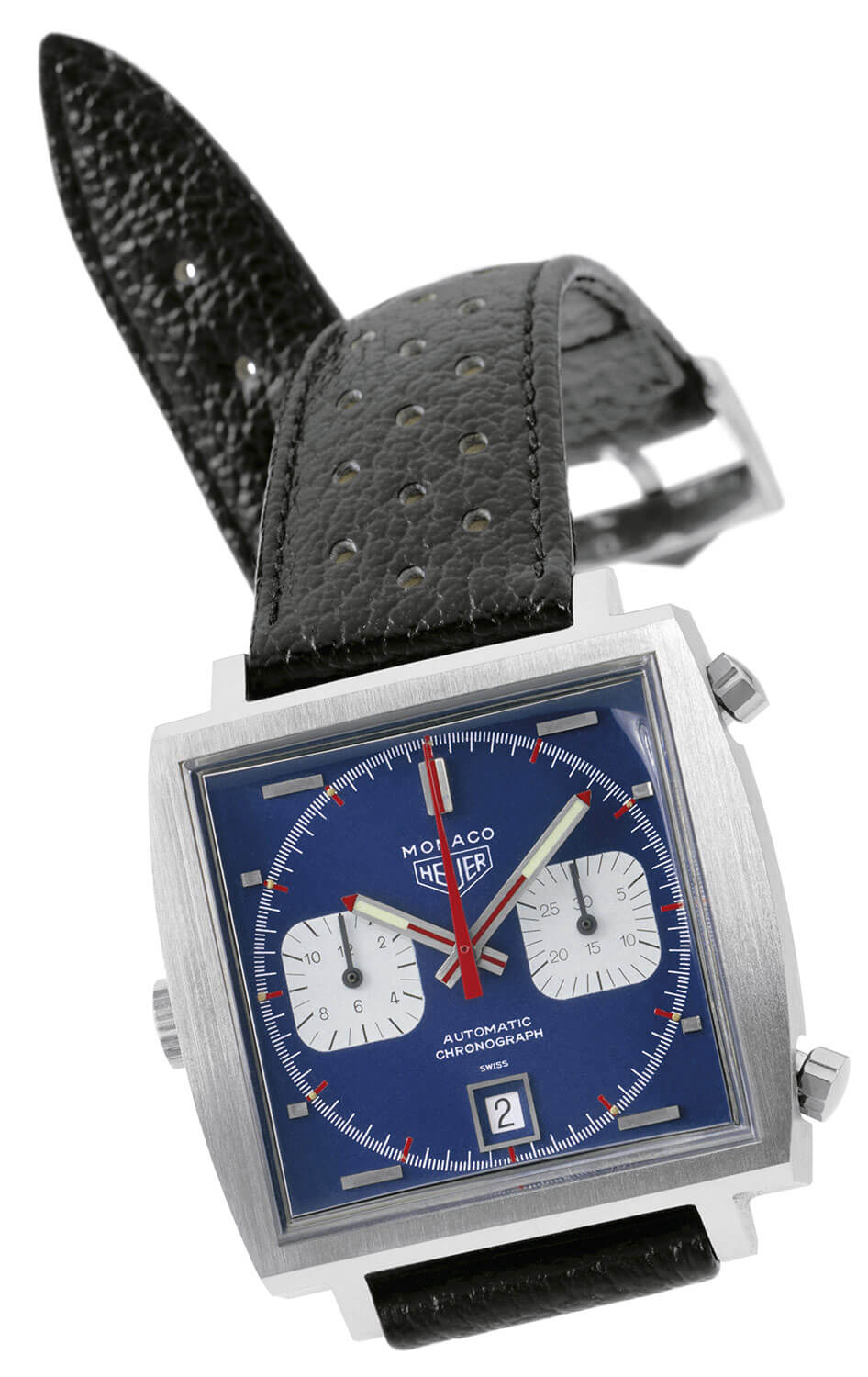
A Heuer Monaco chronograph from 1969
Back in 1970, the blue-dialed Monaco with its two subdials and date window retailed for $400. Certainly it wasn’t nearly as popular as it is today with its bulky 39 x 39 mm square case.
That is until McQueen strapped it to his wrist, climbed into his Porsche 917, and roared into history. Today’s retail price for a new Monaco is $5,900.
Nunley’s story goes that he gathered watches from fivepossible brands for use on the film that he thought would work and that McQueen would like: Tissot, Omega, Bulova, Rolex, and Heuer. Each brand had three or four different models represented in this beauty contest.
Nunley writes in his book, Le Mans in the Rearview Mirror: “Steve looked over all the watches on the table. He did not say anything at first. He was drawn to the Omega. He picked it up and said, ‘I’d like to wear this’.”
Then Nunley pointed out the Heuer patch on the white Nomex driver’s suit McQueen had already chosen and told the actor that Michael Delaney probably wouldn’t wear an Omega watch when his suit said Heuer.
This pretty much eliminated all other watches but the Heuers.
Jack Heuer had submitted four chronograph models, three of which looked similar to the other watches. McQueen looked over all the Heuers, picking the Monaco even over the Autavia that was more the racer’s watch with its highly legible dial and outer rotating tachymeter scale on the bezel.
What a surprise, since McQueen wanted his character’s costume to be as nondescript as possible. Instead he chose the most unusual piece in the entire collection with its oversized, oddly shaped case and colorful dial.
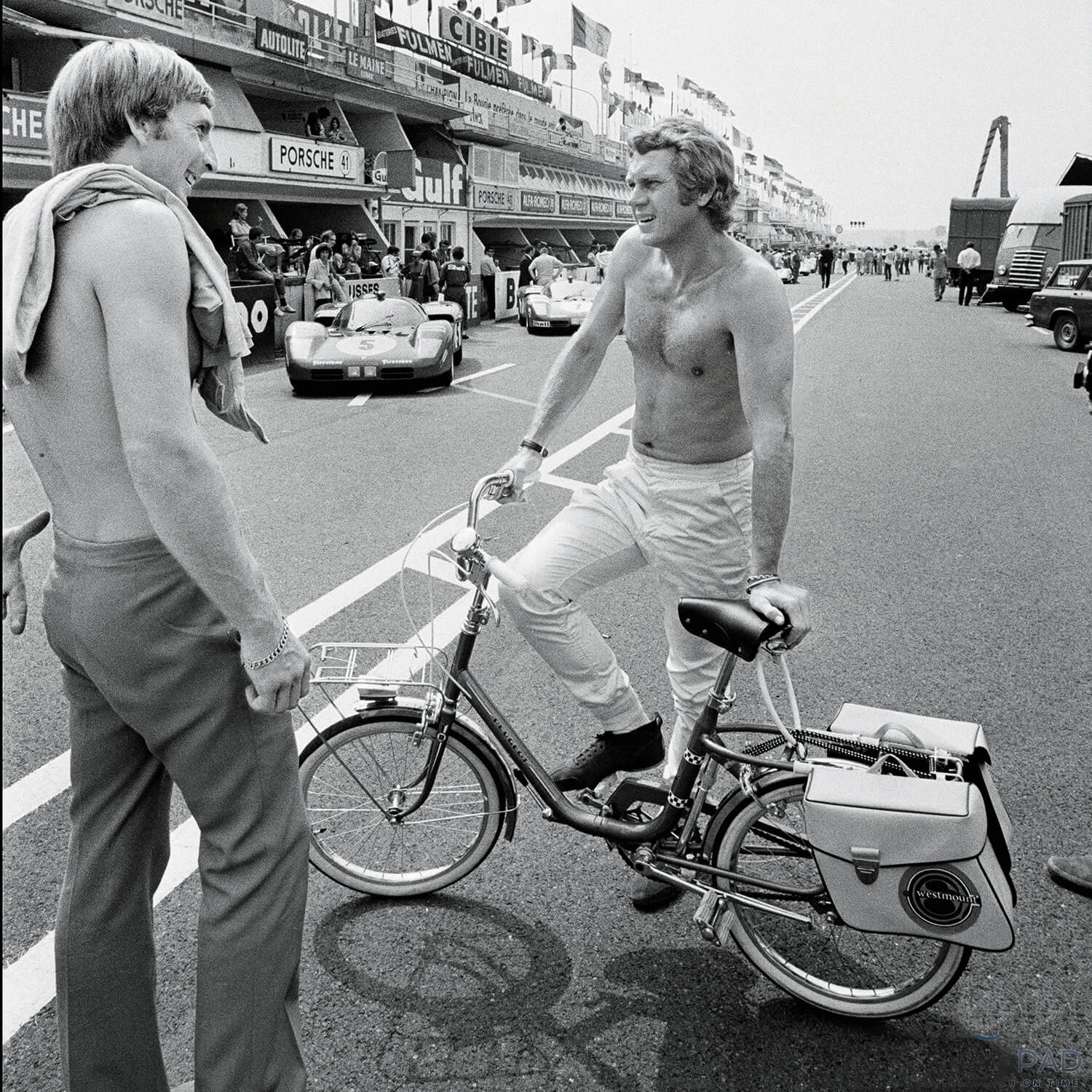
Steve McQueen on set during the filming of ‘Le Mans’: note the Heuer Monaco on his right wrist
How many Heuer Monacos were used?
Movie props suffer from hard use; this is an industry where time is money.
Often the props – such as wardrobe and personal items like watches – are provided by the manufacturer gratis in exchange for the possibility of a close-up or two in the film.
Today, of course, there are substantial fees paid by manufacturers for the privilege of having their products appear in a film. Not to mention the advertising tie-ins, endorsements, and all the rest that make Hollywood such a lucrative business apart from theatrical ticket sales.
The exact number of Monacos used in Le Mans is important because of the tremendous value attached to so few pieces. It’s a matter of supply and demand.
Nunley needed six watches. One immediately went missing, its whereabouts unknown.
Of the five remaining Monacos, one was designated for McQueen to wear on set. Nunley saved the final four as backup reserves in the event that the primaries were damaged or somehow also disappeared. Of these four, Nunley kept one as untouched and unblemished, for use only in close-up photography and PR stills.
In the prop master’s lexicon this is called the hero piece.
Where did the Heuer Monacos go after filming?
My friend is truly an authority on the subject of films and the film industry, and Le Mans is no exception. So I asked him where the remaining Monacos went after the film was released.
“Knowing Steve’s reputation for having sticky fingers,” Nunley said, “I detailed one of my prop assistants to shadow him on the set and retrieve the watch whenever McQueen finished a scene. Even so, somehow one of the five remaining Monacos still managed to go missing – probably to Steve.”
And then there were four.
Nunley bought all the timing equipment and the watches from Heuer for somewhere between $400 and $1,000 so they were his to do with as he chose.
Of the remaining four Monacos Nunley gave one to a dear friend. After the friend’s death, his son (Nunley’s godson) wanted to sell the Monaco, so Nunley connected him with collector and real estate investor Michael Isenberg in Beverly Hills.
The sale price for the number four Monaco was somewhere between $40,000 and $50,000.
Nunley sold Monaco numbers two and three on eBay. Here’s what he told me.
“The Heuer company contacted me and made an offer to buy one of the remaining Monacos for $5,000. I wasn’t sure what the fair market value actually was, but I imagined it to be a little more than that. So I offered two of the watches on eBay.
There was vigorous bidding, moving into the $9,000 range. Heuer called again and asked if they could buy the watch for their original offer of $5,000. I told them that they’d have to outbid the high-water mark on eBay of $9,000, but they’d better hurry since bidding would be closing soon.”
It turns out that a husband and wife who didn’t know the other was even bidding purchased both watches for a little over the $9,000 bids each.
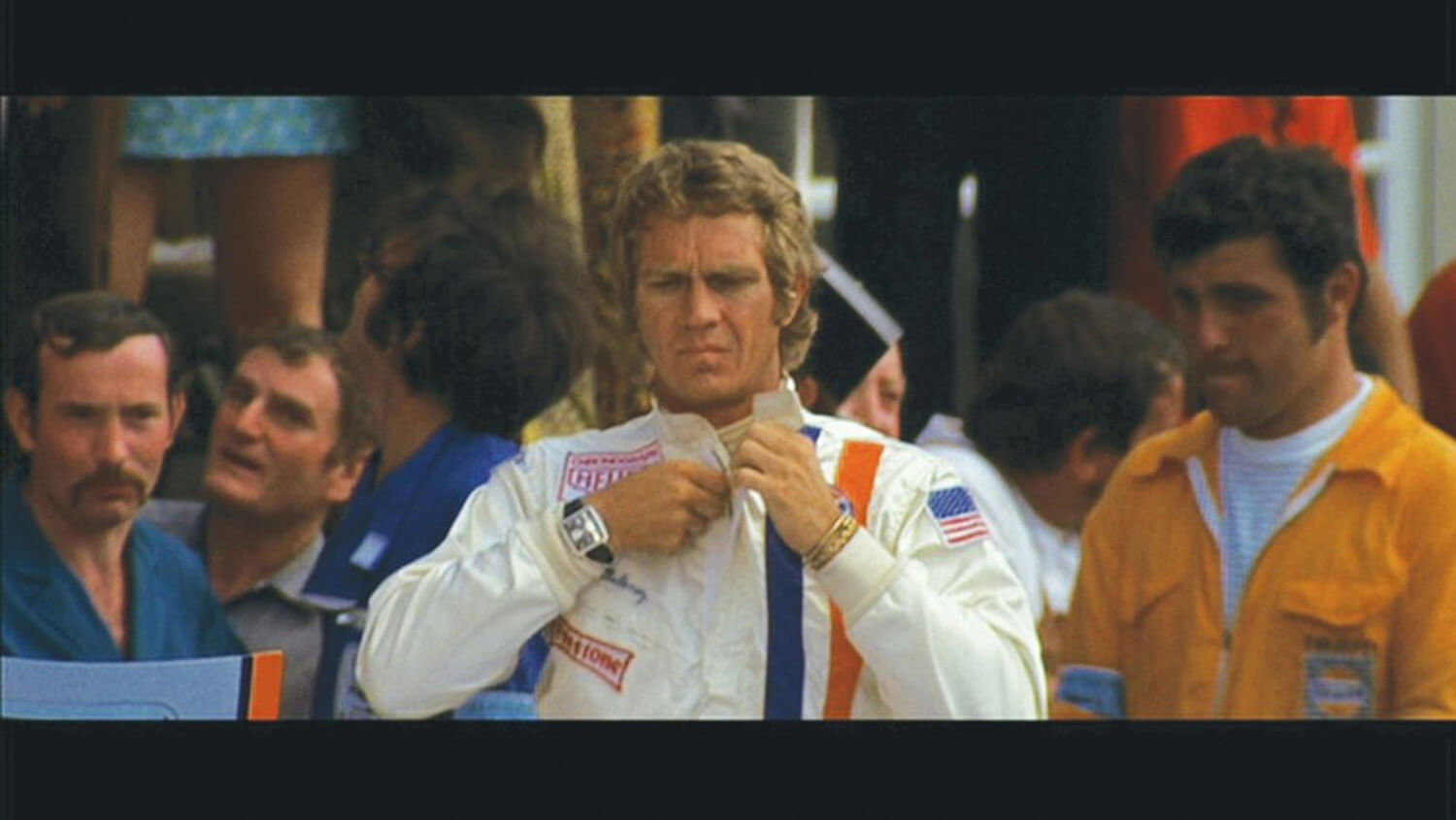
Steve McQueen wearing a Heuer Monaco on the set of ‘Le Mans’
What about the last Monaco?
Nunley gave the final Monaco to his dad, who wore it until he died some years later. “This was the actual watch that McQueen wore in the film. It was well used, both by McQueen and my dad.” So the final Monaco came back to Nunley.
“I got a call from a billionaire, one of the Forbes 400,” he said. “He knew I had the watch and he wanted to buy it. We decided to meet at his estate. We hadn’t talked price yet. He wanted to know if I had any other watches – of historic significance or not – that I might be willing to sell. I did: the last Monaco, a gold Rolex Submariner, a Heuer Carrera, another Heuer chronograph, and three stopwatches used in the film.
“Over coffee we talked about Hollywood, actors, Le Mans, and Steve McQueen. I had a number in mind for all the pieces I had brought. He must have read my mind because he handed me a cashier’s check for that exact amount. But after seeing the Monaco and the other watches, he told me that he didn’t think it was enough. So he had his accountant, who was working in the next room, bring in his personal checkbook while I argued that the first check was more than fair. I told him that if I took any more money I’d just put it into my grandkid’s education fund.
“’How many grandkids you got?’ he asked.
“’Seven.
“He proceeded to write a check for a very generous amount intended for each of my seven grandkids. What a gentleman. Who knows, he just might still have the Monaco.”
One of the Monacos surfaced in 2012 at Profiles In History’s “Hollywood Auction, hammering for $650,000 with a 23 percent buyer’s premium, bringing the sale price up to $799,500.
Here’s how the auction house described the watch in its catalog:
This is the actual wristwatch worn by Steve McQueen during Le Mans production and in related images. In 1970, Jack Heuer himself delivered a variety of his chronograph timepieces to Donald Nunley, prop master on the set of Le Mans in France. From this selection, Steve McQueen himself chose this specific watch to wear as his character “Michael Delaney” during production and in publicity photos. In an early example of product placement, this watch is visible on the arm of McQueen in countless photos and the ultimate film. In fact, his sleeve is often conspicuously pushed up to reveal the watch for the cameras.
In 1969 Heuer released the first automatic chronograph and broke with tradition by creating a square waterproof case to house it. A buckled, black leather vented strap completes the handsome piece. Housed in a red, spring-hinged case sporting the Heuer logo and a checkered flag motif. The watch is seated in a red felt base. The watch is in exceptional condition and comes with its original manual of operation containing a factory typed notation that the watch was sold to “24 h at Le Mans 1970.” An orange sticker on the back of the watch bears the reference number 1133b (the sticker is rubbed from wear, as McQueen wore the watch extensively in production) and a notarized letter of authenticity from Le Mans prop master Donald Nunley.
While researching this article I came across a single reference that McQueen gave his Monaco to his financial advisor. This watch could be the one auctioned.
However, prop pieces used in films are generally treated roughly, yet this watch was described as being in “exceptional condition.” There’s the conundrum.
Earlier I described the hero watch, which was kept in reserve and in mint condition for close-ups and publicity photos. Nunley thinks the watch that was the subject of this auction probably was the hero watch of Le Mans. It seems that way.
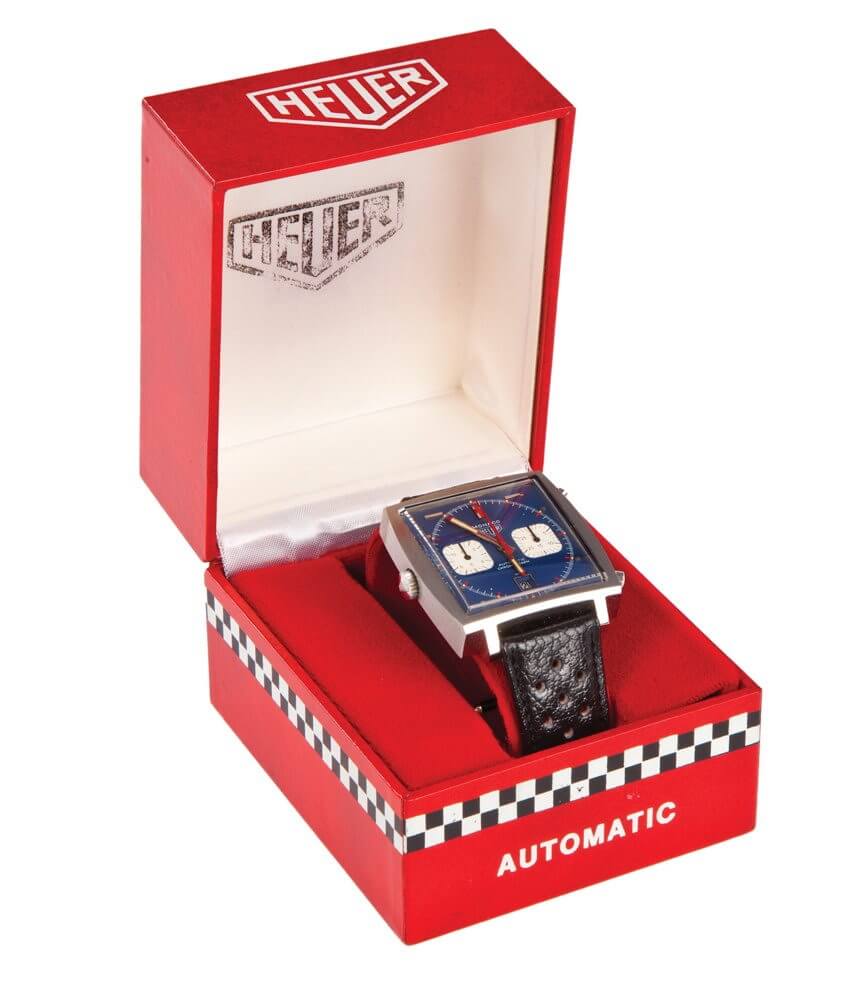
Steve McQueen Heuer Monaco from the 2012 Profiles in History auction (photo courtesy onthedash.com)
So if my accounting is right, I’ve identified where five of the six Monacos went.
Where’s the sixth? It could have been privately sold to a collector and/or have been the subject of one or more private sales since then. We’ll probably never know until it surfaces publicly.
Wasn’t there a McQueen Rolex Submariner?
Yes there was. McQueen often wore his personal Rolex Submariner on the Le Mans set. Nunley says the actor appeared on days he wasn’t scheduled to work. He liked hanging out with the drivers. Often he’d insert himself as just another driver during the filming.
On those days he’d wear whatever white driver’s racing suit was hanging in wardrobe and his Submariner. Since there were no close-ups no one could tell who the driver was anyway.
McQueen’s Submariner was auctioned by Antiquorum in 2009, where it hammered for a price of $234,000 – which seems low today, but set the record for this reference in 2009. The watch was a steel Reference 5512 from circa 1967 with three hands and no date, but in decent condition.
It still seems like a bargain given that it belonged to Steve McQueen. In all, the actor’s possessions – including other watches and a motorcycle – brought in a total of $5.7 million at this New York City auction.
Celebrity cache
Put a product – any product – in the hands of a celebrity and you have a winning combination that is guaranteed to appreciate over the years. Examples of the celeb premium are rampant.
Daniel Craig’s Omega Planet Ocean used in Casino Royale brought $255,565, the highest price ever paid for a James Bond watch. However, it is useful to know that this watch was sold at the first-ever themed auction, Antiquorum’s OmegaMania, which was an event in itself.
The second highest was Craig’s Omega Seamaster Planet Ocean used in Skyfall, which hammered at Christie’s in 2012 for $254,273. Proceeds went to Orbis, a non-profit providing eye care in developing nations.
By contrast, Roger Moore’s Rolex used in Live and Let Die most recently hammered for $365,000, though its previous turn on the podium only brought $196,056. This could be explained by the continuing, extended public interest in both Rolex and auctions.
During its heyday, Antiquorum was in the thick of celebrity watch auctions with perhaps its best result coming at a 2012 auction in which it sold Olympic ski champion Jean-Claude Killy’s Rolex Dato-Compax Chronograph (circa 1951) for a hammer price of $614,500.
Just six years ago in 2012 Christie’s auctioned Eric Clapton’s 1987 Patek Philippe Reference 2499/100 in platinum for an astounding $3.6 million. Without the famous guitarist’s provenance the same reference in yellow gold sold for $539,000 at Bonham’s 2015 Geneva auction.
Before Major League Baseball began handing out World Series rings, players were awarded watches. Babe Ruth’s Gruen Verithin pocket watch commemorating the Yankees’ 1923 World Series championship hammered for $717,000 at the Heritage 2014 New York City auction. The watch was especially noteworthy since it was Ruth’s first piece of MLB championship hardware.
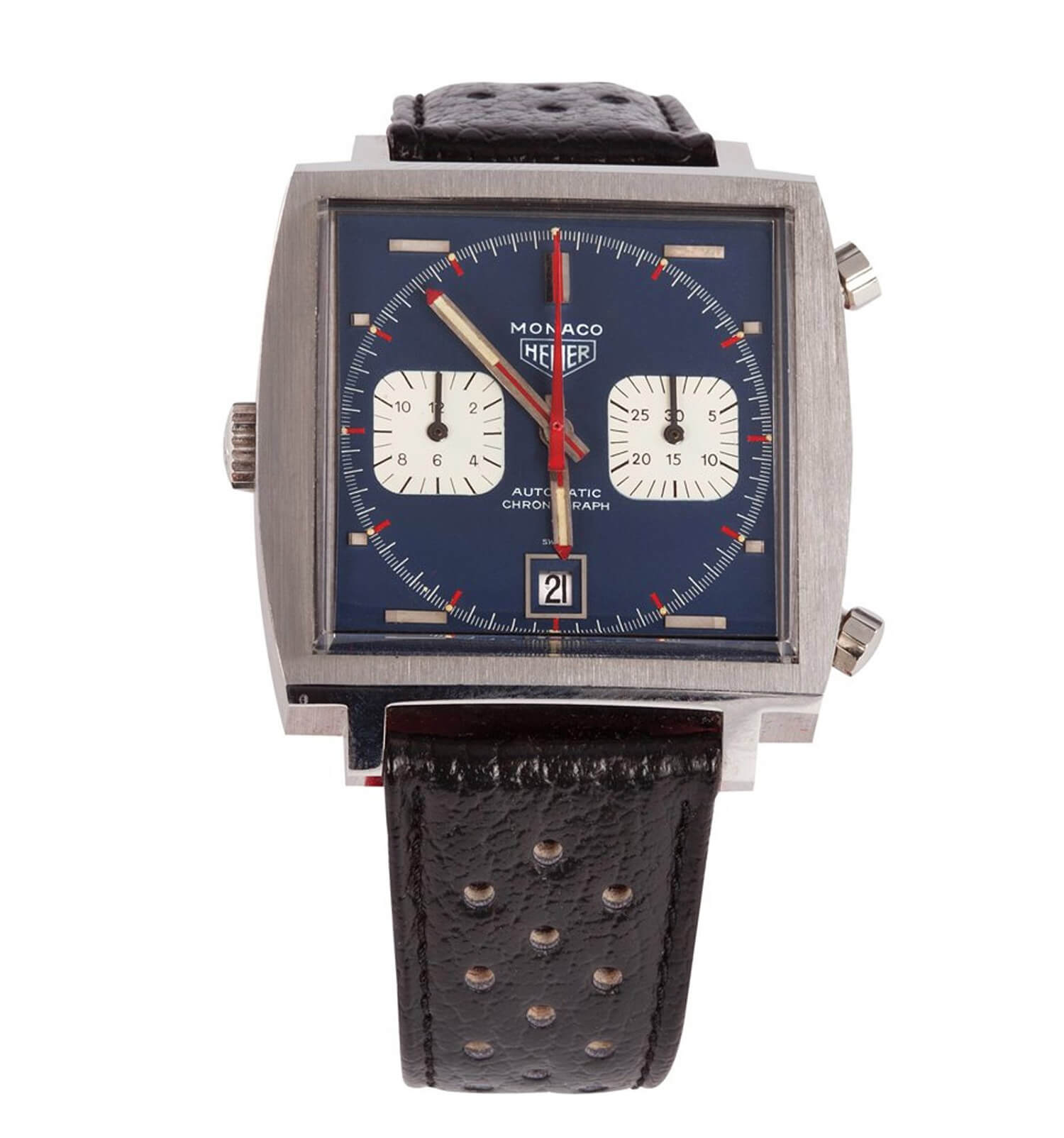
Steve McQueen Heuer Monaco from the 2012 Profiles in History auction (photo courtesy onthedash.com)
The Monaco watch was not alone
Nunley collected a number of other items from the film, too.
Two stand out to me as being of greatest interest: hand-carved small model cars by someone on the set. “These were so intricately detailed and so well done, they were truly works of art. One was of the Porsche 922; another was of a Ferrari.” Nunley sold them to Mike Isenberg in Beverly Hills.
Lastly, Nunley kept the original Le Mans script.
However, there were so many changes – often on a daily basis and sometimes within the same day – that he stopped keeping track of them. The changes came on different-colored pages to identify which version they were.
Nunley began just shoving the colored pages into the back of his script, which he had nicely bound. And he sold it to Isenberg for $3,000. Later Isenberg told him that was the most money ever paid for a script not signed by the actor or director.
So that’s my story of Steve McQueen’s Heuer Monaco.
What began as dinner with a long-standing friend took me on a mystery tour of what actually happened to one of the film industry’s most famous props – as told to me by the Le Mans property master himself.
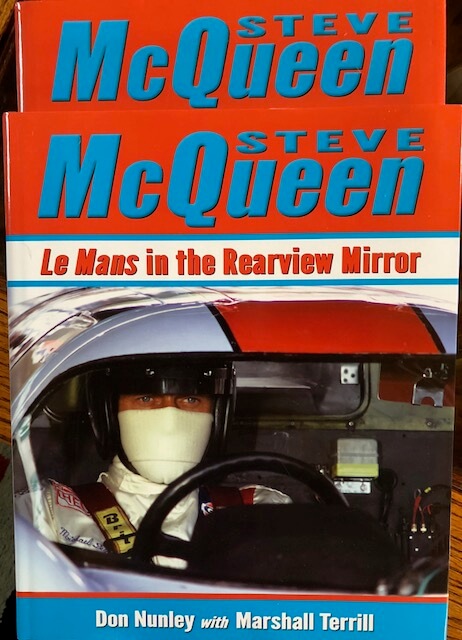
‘Steve McQueen: Le Mans in the Rearview Mirror’ by Don Nunley
Don Nunley is the author of a book about Le Mans entitled Steve McQueen: Le Mans in the Rearview Mirror.
Chris Malburg is also an author, his latest novel is Man of Honor.
* This article was first published on June 26, 2018 at The Real Story Behind Steve McQueen’s Heuer Monaco: Exclusive Interview With ‘Le Mans’ Property Master Don Nunley.
You may also enjoy:
Update: Loren Janes/Steve McQueen Ref. 5513 Rolex Submariner Saga Redux Thanks To ‘The Hunter’
Steve McQueen, The Set Of ‘Le Mans,’ And A Surprising Cartier Tank
Phillips Pulls Steve McQueen Rolex Submariner Reference 5513 From Fall 2018 Auction





















































Leave a Reply
Want to join the discussion?Feel free to contribute!